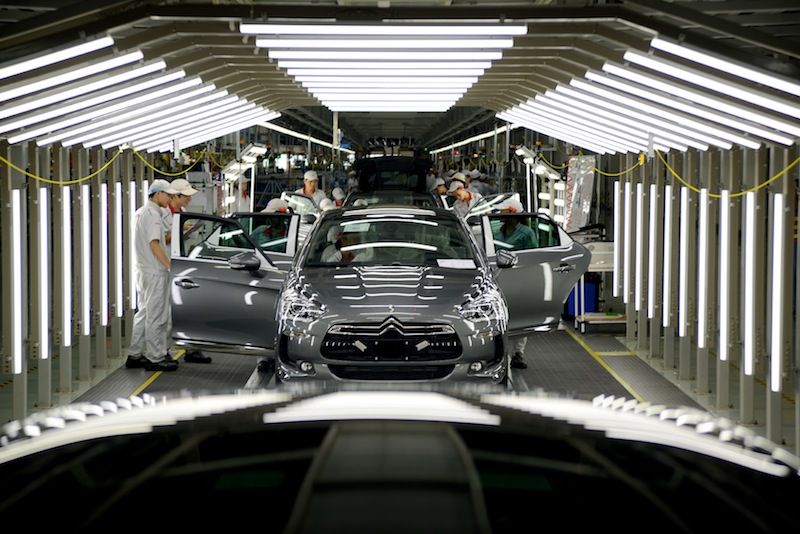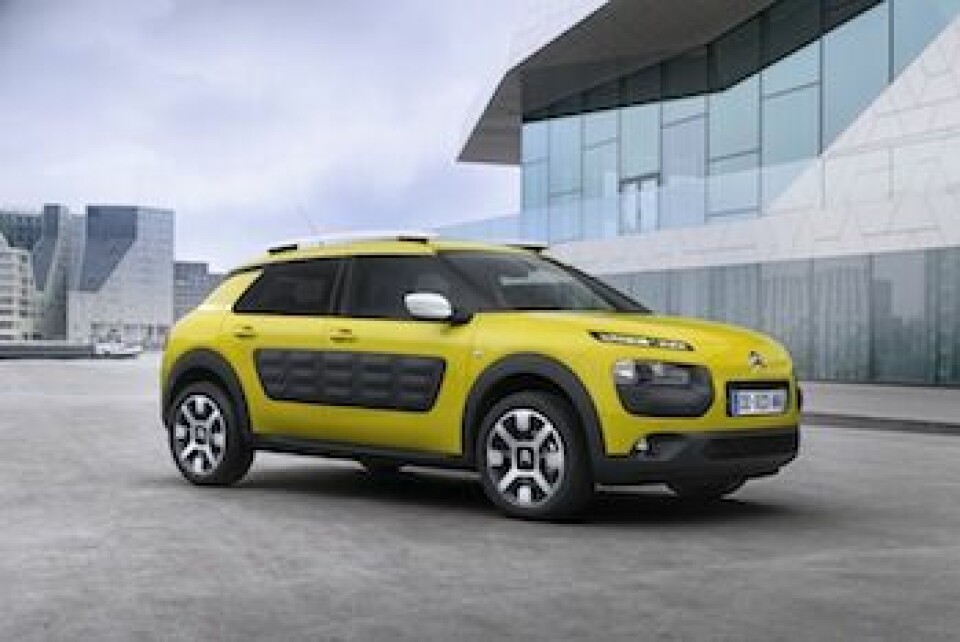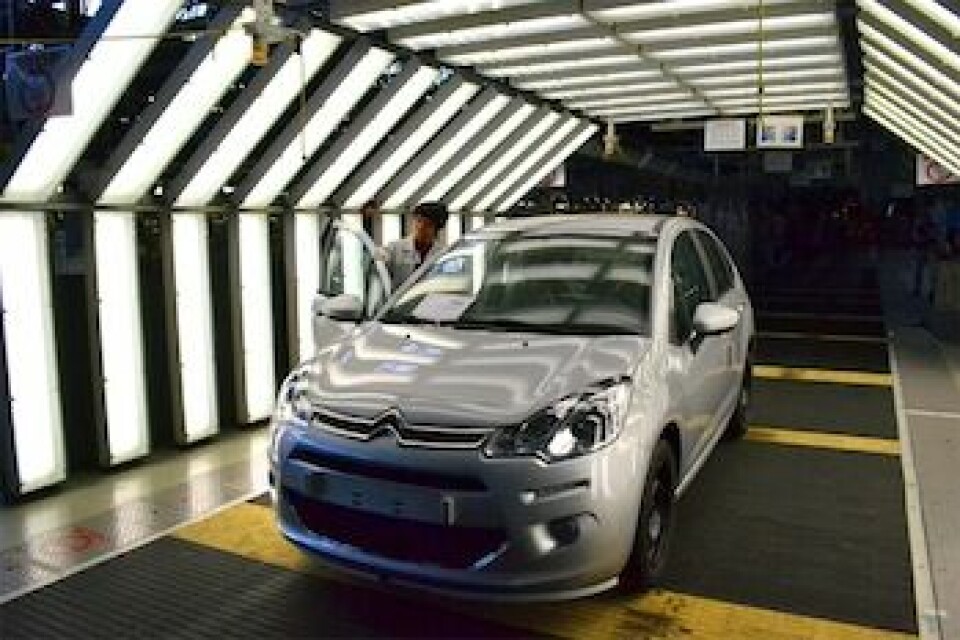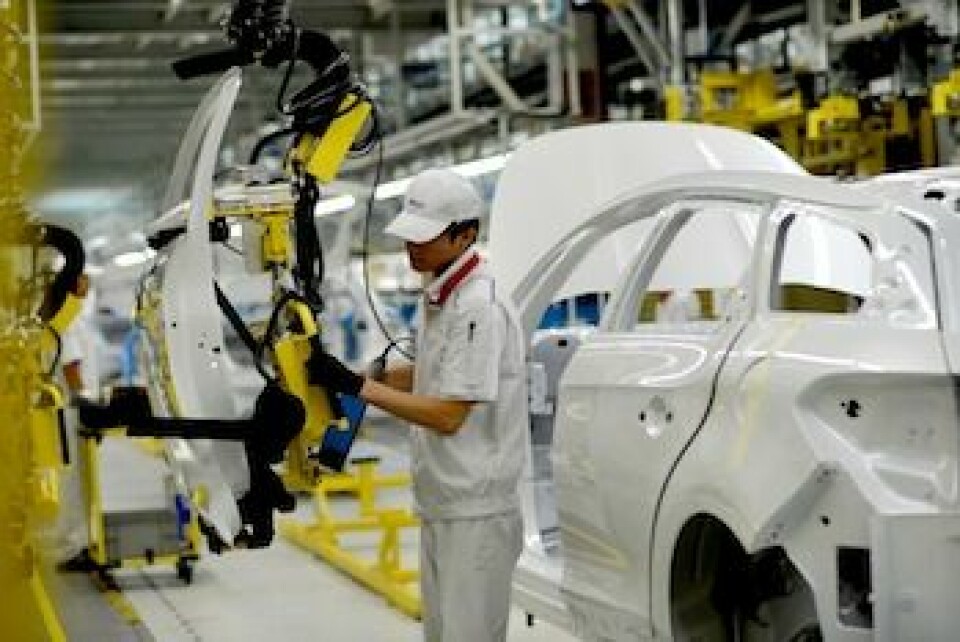PSA: Back in the running?
After recent strife, the OEM is attempting a turnaround by repositioning its brands and production footprint
In October 2014, new PSA CEO Carlos Tavares announced his strategy for the company under the strapline ‘Back in the Race’ – an apposite line indeed, because for many years PSA has been floundering in search of a clear direction. Whether Tavares’ strategy will work for the vehicle-maker, which now has the French government and the Chinese company Dongfeng on its shareholder list, remains to be seen, although the signs appeared positive during the CEO’s presentation to investors at the end of last year.
The highlights of the Q3 2014 presentation were a 5.4% rise in sales across PSA’s global network to nearly 644,000, against 610,000 in Q3 2013, with sales in China and South-East Asia up more than 44%. In Europe, PSA claimed a 7% rise against a market rise overall of 5.8%. As well as boosting sales, the OEM reported significant progress in terms of reduced inventories, down 15,000 on the same time a year earlier, and over 80,000 down on two years previously. For all these recent improvements, much remains to be done in terms of the company’s finances. Q3 automotive revenue was actually down by 0.8%, while overall group revenue was up by 1.6% thanks to its components subsidiary, Faurecia (+6.5%), and growing contributions from joint ventures in China (38.4%). That last figure highlights where PSA’s future is likely to lie.
The initial full-year figures for 2014 confirm the rising importance of China, as well as suggesting that PSA may have turned the corner in Europe. Its global sales were up for the first time in four years, to 2.94m, against 2.82m in 2013. Peugeot rose 6% and Citroen 7%, although the 2014 volume, boosted by sales in China, is still 18% below the volumes the group reported in 2010, when it sold 3.6m units. European sales rose 8% to 1.76m, largely on the back of the new 308 and the continued popularity of the 208, 2008, 3008 and C4 Picasso. China, however, saw a 32% rise to 734,000, increasing PSA’s market share to 4.4%; the country is now the biggest market for the OEM, ahead of its native France.
While Europe recovered somewhat and sales in China have risen strongly, the situation is far less positive in Latin America and Russia. Latin American sales fell by more than one-third amidst economic turmoil in Brazil and Argentina. In Russia and Ukraine – and the rest of the Eurasian region – sales fell by 41% to fewer than 44,000.
However, it will be some time before PSA is able to return to full financial health; the OEM does not expect positive operational free cash flow (ignoring the impact of restructuring and exceptional costs) before 2016. All being well, it predicts a cumulative operational free cash flow of €2 billion ($2.3 billion) between 2016-2018, and just 2% operating margin for the automotive business by 2018, with 5% the target for 2019-2023.
Having reported a net loss of €2.32 billion in 2013 – which led to the 14% stake each gained by the French government and Dongfeng – it will almost certainly report losses for 2014 and 2015. In order to get close to these modest targets, the group must embark on a further round of cost-cutting, especially in Europe.
In a symbolic move, the group will transfer its headquarters from central Paris to more functional offices in the suburbs. The company had actually sold its HQ building in 2012 to raise cash, but continued to operate there under a renewable lease which expires in 2017. Reports in November 2014 also suggested that PSA would look to shed another 3,500 or so jobs in France during 2015, to be achieved through early retirement, voluntary contractual buyouts and internal transfers; the unions expect further cuts beyond this round, and there have been suggestions that 9,000 jobs might be lost in France alone. In parallel, union agreements and production efficiency improvements should enable PSA to cut up to €600 of production costs per vehicle by 2018.
Competing with premium brands
One of the most interesting recent developments at PSA has been the emergence of DS as a separate brand. For many years, PSA has been divided between Peugeot and Citroen, both operating in the mass market alongside Ford, Fiat, Opel/Vauxhall and Renault. This middle market has been under severe competition in recent times as the premium brands have encroached on it with a wider range of models at competitive prices, while new value brands, such as Dacia, Skoda, Hyundai and Kia have progressively under-cut the established brands, first on price, and more recently with cars that are equally good quality – and often better.
PSA’s response has been to redefine its core brands’ offerings and bring in a third; Citroen, officially now the C Line, has been positioned at the bottom of the three-brand line-up, in terms of price at least. As the entry-level brand, it will increasingly feature vehicles like the competitive – and distinctive – C4 Cactus. Despite being called a C4, this vehicle is actually based on the old C3 platform and, apart from its distinctive exterior panels, consists of old modules and technologies from models that are outgoing or no longer produced. It is also the first new vehicle that PSA has launched since debuting its modular platform strategy which does not use any of this EMP technology. PSA sees the C4 Cactus as the embodiment of Citroen's ‘Créative Technologie’.

Peugeot will now take on direct middle-market competitors such as Ford and Opel, with the aim of becoming 'best in class'. It will rely on the youthfulness of its model range, and indeed maintaining this youth. Peugeot brand managers claim that, following the launch of the new 308 range, the successful 2008 and the renewed 508, the brand now has the youngest range in its history; it remains to be seen whether this line-up will bring about the hoped-for change in fortunes.
After operating as a sub-set within the Citroen line-up, now the DS range is not only a brand in its own right but positioned as the most expensive in the group. PSA sees DS as its route to competing directly with Audi, BMW and the other premium brands.
It is an ambitious strategy and one that is not without challenges. The range is currently a three model line-up in Europe: DS3 (based on the C3), and DS4 and DS5 (which draw heavily on the old C4 platform). It has been extended in China with the DS5LS, a DS6 and a DS6WR SUV-like version. Industry insiders expect a larger DS9 to be added in China, while a smaller model, possibly called DS1, is expected in Europe, to be made either in France or at the PSA-Toyota joint venture plant in the Czech Republic. It is expected that DS1 would share the same platform as the new C1/108/Toyota Aygo models. It is in China, however, that PSA has particular hopes for this brand – the DS 5LS and DS6 models are sold only there.
Holding on at home
France remains important to PSA, but one of the notable features of the company’s strategy in the recent past has been its expansion outside France. Before turning to the specific case of China – which has become more important to the group's future with the arrival of Dongfeng as a shareholder – it is worth noting what has happened in France and in the rest of Europe.
Currently, PSA operates five plants in France, having recently closed its Aulnay factory in northern Paris. It has retained Poissy in north-west Paris, but with a much reduced capacity. The plant will lose production of the next C3, which is moving to PSA’s Slovakian plant, Trnava, and will instead concentrate on the DS3 and some production of the Peugeot 208. A modest €150m is to be invested to improve production efficiency. The unions which had fought hard to retain Aulnay must take solace in the fact that this small investment and focus on the DS range will mean the survival of the plant within PSA's network until the 2020s, albeit mostly operating on a single shift.

Meanwhile, to the west of Paris, PSA Rennes is another plant which is operating on a much reduced scale compared with past glories. Rennes’ three assembly lines have been cut to just one and production is currently focused on PSA’s limited large-car line-up, the Peugeot 508 and Citroen C5. Replacements for these models are expected in due course, and the plant will also make the replacement for the Peugeot 5008, which is now PSA’s largest MPV; the Sevel Nord plant at Valenciennes has now stopped making the 807/C8 MPVs and only assembles vans.
PSA’s two other plants are in eastern France, at Sochaux and Mulhouse, where the successful 208/2008 and 308/3008 ranges are made, with 208 production shared with Trnava; when the 3008 is replaced in the next two to three years, PSA will also make a version of this model for Opel/Vauxhall as the replacement for the Zafira. As part of this deal, Opel will make the successor to the Citroen C3 Picasso at its plant in Zaragosa, Spain.
Elsewhere in Europe
PSA has two plants of its own in Spain. Its small plant in Madrid makes the C4 Cactus and still turns out some old 207s, but this will end in 2015. The OEM had considered closing this factory but retained it when the idea of making the Cactus emerged. For now it is safe – but for how long, if the C4 Cactus should prove to be a passing fad? In the short term, prospects for the C4 Cactus look good, with extra shifts being added to meet better than expected demand; industry analysts had predicted sales of between 50-100,000 units a year for this unusual-looking model, although the factory has a capacity of 200,000 units a year.
Of greater significance is the large PSA factory in northern Spain, at Vigo. Here, PSA makes the C4 Picasso and the Berlingo/Partner LCVs, plus the low-cost Peugeot 301 and Citroen C-Elysee. The last two models are intriguing examples of PSA trying to find a way to compete with Dacia and other low-cost brands. Production and labour costs in Vigo made this a viable economic project, but after a couple of successful years and sales of over 50,000 units a year of each model, sales are now running at less than half this number and the long-term future looks doubtful. Vigo’s importance as the producer of the C4 Picasso and the Berlingo/Partner vans should not be questioned, however. Vigo will also make a version of the next Berlingo/Partner for sale by Opel/Vauxhall as the Combo, replacing the current Combo which GM sources from Fiat in Turkey. Vigo also provides stampings to PSA’s plant at Mangualde in Portugal, which makes Berlingo/Partner models, mainly for export beyond Europe.
The plant at Trnava, Slovakia, is PSA’s final wholly owned plant in Europe. Here, the bulk of the Peugeot 208s are made, along with the current C3 Picasso; as noted this model will switch to Opel in Spain in a couple of years. The Slovakian site will instead make the next C3, at a much higher rate than the C3 Picasso.
PSA also operates a joint venture plant in Russia, with Mitsubishi, but currently produces fewer than 50,000 vehicles a year there, mainly using stampings sent from France, alongside some rebadged versions of the Mitsubishi Outlander which are sold in Russia under the Peugeot and Citroen names.
Exploring further afield
In addition, PSA has recently signed an agreement to assemble the Peugeot 301 in Kazakhstan from 2016. Initially, 12,000 vehicles will be built from completely knocked down kits which are expected to be shipped from Spain, but this could rise to 17,000. The AllurGroup, PSA’s partner in Kazakhstan, is already producing a number of PSA models (301, 3008, 508 and Partner) from semi-knocked down kits.
In an intriguing report in November last year, it was suggested that PSA is also considering opening an engineering centre in Morocco, as a prelude to establishing an assembly plant there. Considering the success that Renault has enjoyed with its Dacia plant in Tangiers, it would be understandable if PSA is contemplating a similar move.
Meanwhile, PSA has been active in Brazil and Argentina for some years, producing current models in the former and previous-generation models in the latter. The Argentinean plant, in Buenos Aires, was opened in 1963 and produces the Peugeot 206, 207, 307, 408, Partner and Citroen C4 and Berlingo. The Brazilian plant in Porto Real is in the midst of an investment programme which will see €240m invested this year, with the same amount having been invested in 2013 and 2014. In 2010-12, €530m was invested to produce the Citroen C3 and C3 Picasso and a variety of 207 vehicles. New models will be introduced in the near term, although the timing for this depends on how quickly the Brazilian economy recovers from its recent downturn.
However it is China where PSA’s future will increasingly be focused. Through its joint ventures with Dongfeng, PSA can already produce more than 600,000 vehicles a year in China and this will rise in the years ahead.
So important is the Chinese market to PSA that the company is already developing a number of models specifically for this region – models which as yet have not been introduced in Europe. The Chinese-only models include the DS 5LS and DS6 models already mentioned, but also the Citroen C3-XR small SUV that is made at the Wuhan plant, which operates under the Dongfeng Peugeot Citroen name and also produces the 2008 and 3008 crossover models. The DS models are made at Changan PSA in Shenzhen, southern China.
From 600,000 units in 2013, PSA's capacity in the country will rise to 1m by 2016, with more increases to follow.
The OEM’s current presence in China includes:- A technical and R&D centre in Shanghai which is responsible for adapting European-developed vehicles and platforms for China and other global markets
- A powertrain factory in Xiangyang which is capable of making 640,000 engines and 375,000 gearboxes per year. It is expected that capacity for both engines and gearboxes will be increased as PSA vehicle output in the country continues to grow
- A second powertrain facility at Shenzhen, with the capacity for 200,000 engines a year
- Four, soon to be five, vehicle plants.
The vehicle plants consist of:
- Three plants operating under the Dongfeng joint venture which long predates Dongfeng becoming a shareholder in PSA; these plants in Wuhan have a total capacity at present of 750,000 units a year, making a very wide range of models: the Peugeot 207, 2008, 301M, 307, 308, 3008, 408 and 508, as well as versions of the Citroen C4 (the C-Elysee, C4L and C-Quatre)
- A joint venture plant with Changan, in Shenzhen, on the same site as the powertrain factory. This is where PSA makes its DS models for China, with production currently focused on the DS5 (also made in France) and two models which are only produced and sold in China, namely the DS 5LS (a larger version of the DS5) and the DS6
- A fifth plant in Chengdu which will have a capacity of 360,000 when full production begins in 2016 or 2017.



